Fiber optics technology has become indispensable in telecommunications, networking, and infrastructure industries As reliance on fiber optics grows, so does the need for trained and certified fiber optics technicians Getting certified in fiber optics can open up job opportunities and lead to higher pay and career advancement. This guide will provide an overview of fiber optics certification and how to go about earning the most recognized credentials.
Why Get Certified in Fiber Optics?
There are several key benefits to getting certified in fiber optics:
-
Prove your skills and knowledge – Certification demonstrates that you have mastered the key competencies in fiber optic handling, installation, maintenance and troubleshooting. It validates your expertise to employers.
-
Increase employability – Many employers now require or prefer certified fiber techs, Certification can make you more competitive for jobs and contracts,
-
Earn higher pay – Surveys show certified techs typically earn 10-15% more than non-certified techs. The more advanced certifications tend to lead to higher salaries.
-
Advance your career – Certification is a pathway to take on more responsible roles and work on complex fiber optic systems. It enhances your professional reputation.
-
Meet job requirements – Government, military, aerospace, utilities and other major employers mandate certain fiber optics credentials. Certification may be necessary to work in these fields.
Clearly, investment in certification can pay off through better job opportunities, higher compensation and career growth. Next, let’s look at the major certifications for fiber optic technicians
Fiber Optics Certifications
There are a few major organizations that offer certifications for fiber optic techs:
-
FOA – The Fiber Optic Association offers a wide range of fiber optic credentials focused on skills, design and applications. The CFOT is considered the gold standard for entry-level techs.
-
ETA – The Electronics Technicians Association International provides basic and advanced fiber optic installer certifications.
-
BICSI – This association offers RCDD and installer credentials with a focus on data centers and infrastructure.
-
SCTE – The Society of Cable Telecommunications Engineers has general telecom tech and fiber optic technician certifications.
The Fiber Optic Association (FOA) is the most prominent non-profit organization dedicated solely to fiber optic education, certification and standards. Let’s take a closer look at FOA certifications.
FOA Fiber Optic Certifications
The FOA offers credentials in three main categories:
Core FOA Certifications
-
CFOT® – Certified Fiber Optic Technician. This is the fundamental certification that covers fiber optic theory, safety, installation, connectors, splicing, testing and troubleshooting. It is required for all entry-level techs.
-
CPCT – Certified Premises Cabling Technician. This certification covers copper cabling, fiber optics and wireless networking for premises networks.
-
CFOS/D – Certified Fiber Optic Specialist in Design. This cert focuses on fiber optic network design and project management. It does not require the CFOT prerequisite.
Specialist FOA Certifications
These certs require the CFOT and focus on specific skills or applications:
- CFOS/O – Outside Plant Installation
- CFOS/S – Splicing
- CFOS/C – Connectors
- CFOS/T – Testing/Maintenance
- CFOS/H – Fiber to the Home
- CFOS/L – Optical LANs
- CFOS/W – Fiber Optics for Wireless Networks
- CFOS/DC – Data Centers
Renewal Requirements
FOA certifications are valid for three years. To renew, techs must show they completed continuing education units (CEUs) related to fiber optics. CEUs can be earned through courses, seminars, workshops or conferences.
The FOA CFOT is very well recognized globally and can open doors for fiber techs. So how does one go about achieving CFOT certification? There are two primary paths:
Get CFOT Certification Through a Class
The traditional route is taking a formal fiber optics training class at an FOA-approved school. These classes include theory lectures and hands-on lab work to build key skills. At the end of the 3-5 day course, students take the CFOT exam.
-
Benefits: Structured environment to learn; instructor support; hands-on labs; exam included at end.
-
Considerations: Must take time off work; costs of tuition and travel.
Depending on your background, the CFOT course may be the best option to prepare for the exam and get hands-on experience. Approved schools are located across the US and internationally.
Get CFOT Certification through Self-Study
If you already have at least 2 years of recent experience installing and troubleshooting fiber networks, you can pursue CFOT certification directly through the FOA.
The FOA allows experienced techs to study on their own using FOA reference guides and then take the CFOT exam at a local testing center.
-
Benefits: Study on your own time; lower cost than taking a formal class.
-
Considerations: Lack of guided instruction or hands-on labs; discipline for self-paced studying.
The self-study route allows current fiber techs to upgrade their skills and credentials without taking time off work. You study the material on your own and demonstrate your knowledge by passing the exam.
How to Prepare for the CFOT Exam
Whether you attend a formal class or self-study, you’ll need to make sure you adequately prepare for the CFOT exam.
Here are some tips on getting ready for the test:
-
Carefully review the CFOT KSAs – knowledge, skills and abilities – that indicate what is covered on the exam
-
Study the FOA reference materials like the printed FOA textbooks or online FOA Reference Guide
-
Go through lessons on basic fiber optics theory, safety, installation, splices, connectors, test equipment and troubleshooting
-
View FOA YouTube videos that demonstrate key fiber optic procedures
-
Take practice quizzes and sample tests
-
Focus your study on any weak areas
-
Get hands-on practice if possible in tasks like proper fiber handling, connector polishing, working with test equipment
-
Ask colleagues questions to reinforce knowledge
-
Maintain a professional, positive attitude
With diligent preparation using the FOA reference materials, experienced techs can pass the CFOT exam and earn their certification.
Recertification and CEU Requirements
It’s important to note that the CFOT and other FOA certifications are valid for three years. To recertify, techs must show they have earned 24 Continuing Education Units (CEUs) relevant to fiber optics within the three year period.
CEUs can be earned through:
-
Completing fiber optics courses and seminars
-
Attending industry conferences like BICSI, SCTE or FOA
-
Taking manufacturer fiber optic product training
-
Participating in online fiber optic webinars
Maintaining certification ensures your skills stay up-to-date in this rapidly changing field. Check the FOA website for full details on recertification procedures.
Career Path After CFOT Certification
Achieving CFOT certification is a great starting point for fiber techs. After getting some field experience under your belt, you can pursue more advanced certifications:
-
CFOS/O – Fiber Optics for Outside Plant – for techs working on outdoor cabling
-
CFOS/S – Fiber Optic Splicing Specialist – for those doing fusion splicing
-
CFOS/C – Fiber Optic Connector Specialist – for techs terminating and polishing connectors
-
CFOS/T – Fiber Optic Testing/Maintenance Specialist – for troubleshooting networks
You can also start moving into lead or supervisory roles and get into design work with CFOS specialty and design certifications.
Many techs also branch into management roles as their careers progress in the industry. Overall the CFOT is the jumping off point that opens doors in the vibrant fiber optic field.
Earning fiber optic certification, especially the foundational CFOT, can benefit your career in numerous ways. It validates your skills, makes you more employable, enhances your earnings potential and shows your commitment to the industry. Both new and experienced techs should strongly consider adding certifications from the FOA or other respected organizations. With commitment and proper preparation, you can pass the exams and achieve credentials that propel your fiber optic journey.

Effective Hands-on Teaching Style
What sets The Fiber School apart from other training schools and certifying bodies is the “hands-on” approach that is used in our classrooms. Students don’t just learn from a book, or by watching someone else perform the procedures they are learning about – they roll up their sleeves and get their hands dirty using the latest, most advanced industry equipment and techniques themselves.
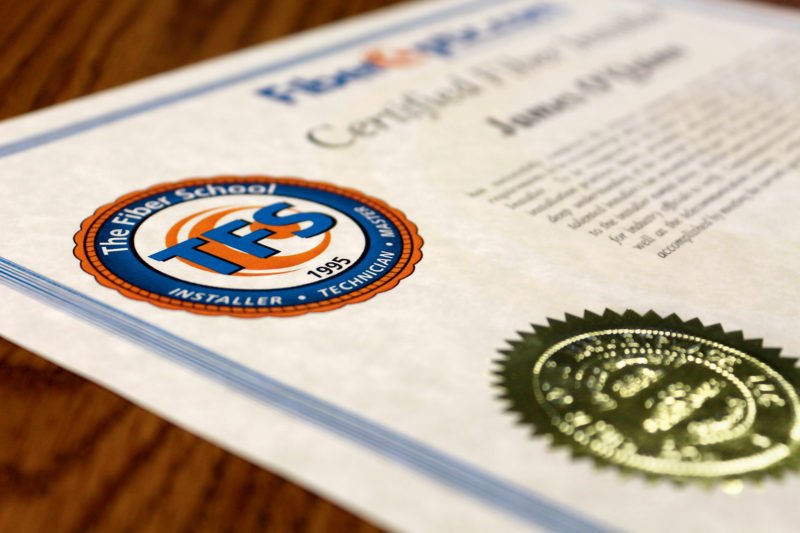
The Fiber School is known as the premier certification school in Fiber Optics (as well as many other telecommunications areas including wireless, pro audio and video, fiber optics for wind turbines and much more). Students can choose to take one course at a time, or can choose to become certified as a “Master” or “Professional” and save money by purchasing a bundled package.

Recommended for those with 0-2 years of experience; this fiber optic installation training course is designed for those who layout, install or maintain fiber optic cabling systems.

Recommended for those with 1-3 years of experience in OSP (outside plant) installations. OSP covers building to building, long haul telecommunications, and more.

We can develop and deliver a custom curriculum specific to your needs and application. Let us create a course to meet your desired skill level and specific subject matter.
Receive all of the materials to competently demonstrate your proficiency as a fiber optic installer directly to your own home. Additionally, you will be provided with access to our online video library. Simply follow the videos, do the labs at your own pace, at your own location, then take a picture of your completed lab to submit for grading. Upon successful evaluation of your hands-on labs, you will be granted the valuable Certified Fiber Optic Installer (CFI) certification.
Don’t know where to begin?
![]()
A beginner who is interested in training to become a fiber optic installer
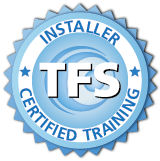
Certified Fiber Optic Installer (TR-CFI) is the most common course to start with, but there are also a variety of specialized installer courses to give you a jump start into a particular field.
![]()
An installer who has completed a level 1 course or has experience working in the field
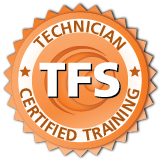
The technician courses are intense and consist of five days of real-world, hands-on lab exercises that will build upon the knowledge you have gained in the installer level courses and prepare you for more advanced splicing and testing installations.
![]()
A technician who has completed a level 2 course or has many years of fiber experience.
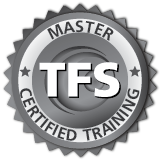
The Master level of certification is The Fiber School’s most advanced certification program, designed for students who have either completed one of our Technician certifications or have commensurate industry experience.

Whether it’s your budget, your schedule, or your location, we know you can’t always take the time to get away for training. If that is the case (or if you just prefer to learn at your own pace), The Fiber School now offers dozens of classes online (including our most popular one – Certified Fiber Optic Installer TR-CFI-RCT-OP1) that you can take from anywhere you have reliable internet access.
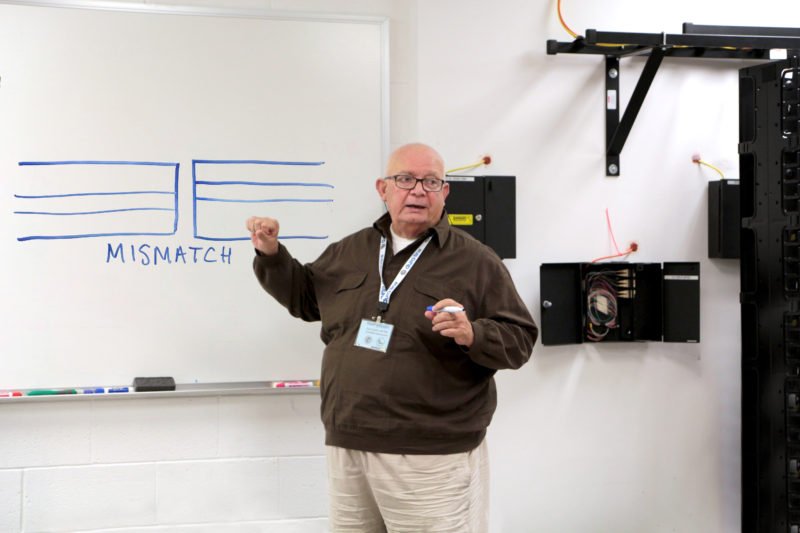
The Fiber School’s instructors aren’t just teachers, they’re field-experienced technicians and engineers who have seen it all and done it all. They’ve experienced the pitfalls and can teach you how to avoid them. Teaching much more than simply industry “best practices,” students are empowered with real-world examples, tips, tricks, and techniques that enable them to excel right out of the gate.
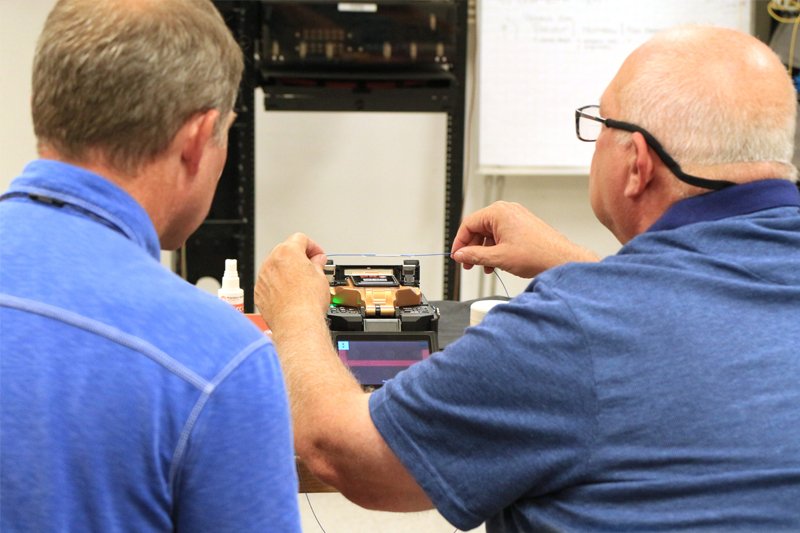
How to get certified as a fiber optic technician
How do I become a fiber optic specialist?
Studying may be done by taking approved training, reading the FOA textbooks or the FOA Online Fiber Optic Reference Guide or self-study programs on Fiber U. If you are already a CFOT or CPCT interested in specialist certifications, you should keep records of your field experience qualifying for FOA specialist certifications.
Where can I find a fiber optic technician certification?
Go to FOA Certifications Listing By US Department of Labor – Career OneStop and search for “Fiber Optic Association” to see all the FOA certifications listed. See also The DoL Occupational Outlook Handbook which has a page covering fiber optic technicians under “Line Installers and Repairers” and links to FOA certifications.
How do I get a fiber U certification?
The “Work to Cert” program requires a minimum of two years of recent work experience in the fiber optics industry. 2. Verify your knowledge Before sending your application to take the online FOA certification exam, FOA recommends taking the Fiber U online course related to the certification you’re applying for.
What is a cfot® certified fiber optic technician?
CFOT® – Certified Fiber Optic Technician – is the primary FOA certification for all fiber optics applications. CFOTs have appropriate knowledge, skills and abilities ( KSAs ) in fiber optics that can be applied to almost any job – design, installation, operation – for almost any application – outside plant, premises, manufacturing, etc.